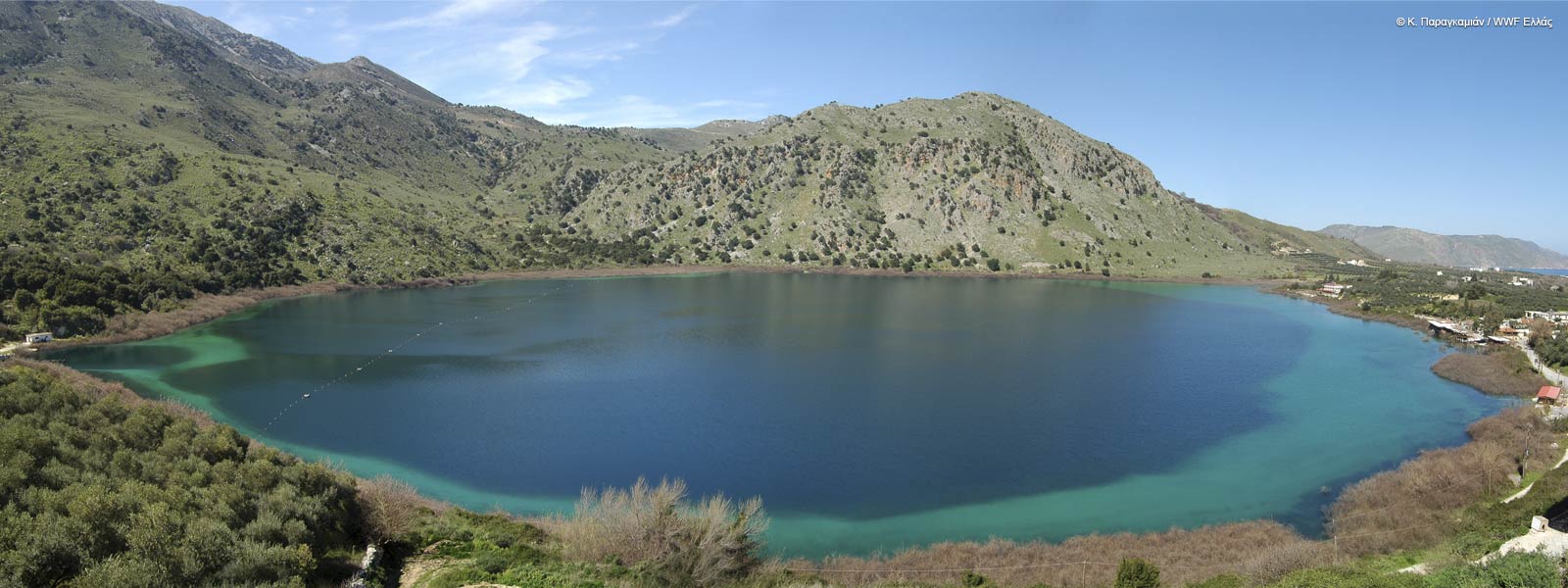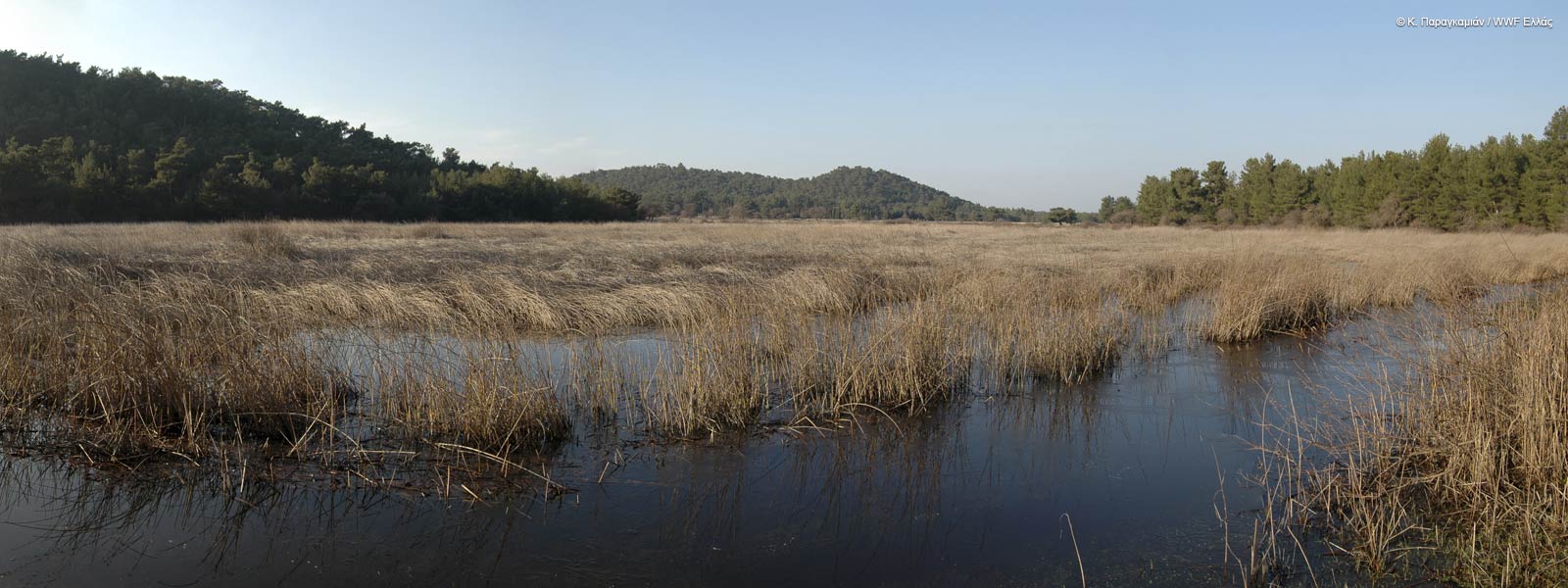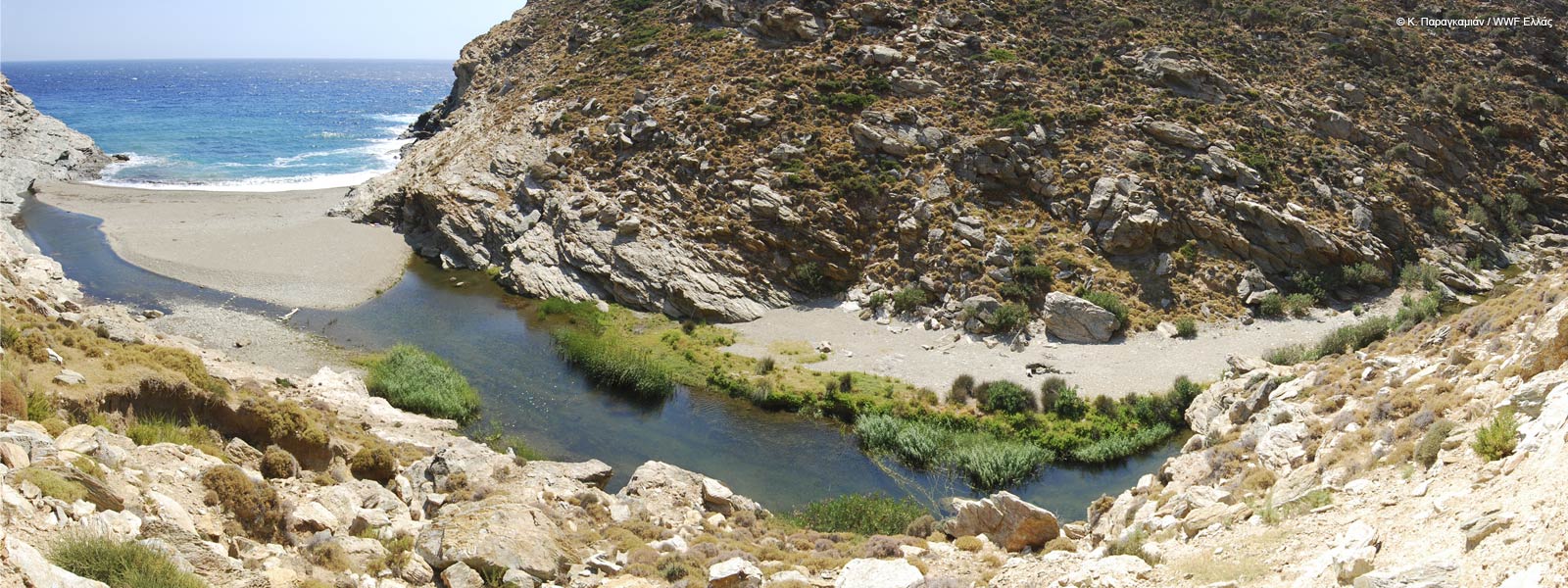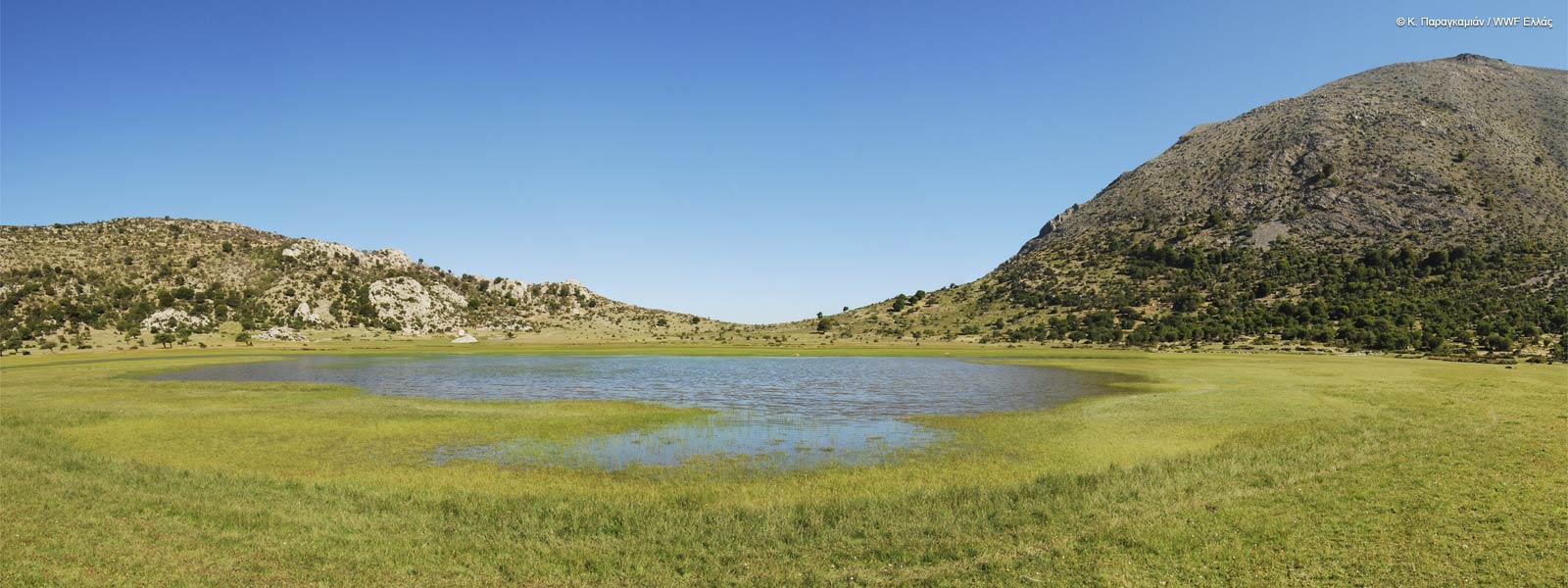Island Wetlands - Living Wealth
With more than 3,000 small and larger islands, Greece is a unique cradle of biodiversity in the Mediterranean. Wetlands stand out among the ecosystems that have always contributed substantially to landscape continuity and the diversity and conservation of life in Greek islands. They are areas of high biodiversity, necessary stopovers for millions of migrating birds and refuge to wintering ones, indicators of the sufficiency and condition of water in the islands, and a unique sustainable development asset; they are oases of life. Although wetlands occupy less than 1% of the total area of Greek islands, they are exceptionally important for the survival of endemic species, such as the gizani fish of Rhodes, the Karpathos frog and the Cretan water frog.
Over the past few years, wetlands have been attracting more and more visitors for bird-watching and other activities; one example of that is the case of the island of Lesvos.
Island Wetlands - Unknown and Threatened Wealth
Unfortunately, the gap of knowledge concerning the number and condition of wetlands was glaring, particularly in the islands, while wetlands were by and large non-existent in the eyes of the state. Both the state’s and citizens’ ignorance and disregard of these ecological gems resulted in their continuous degradation and shrinkage.
Degradation is a fact for most of these wetlands and it is still ongoing, mainly due to land clearing, filling, building and road development, and the reduction or deprivation of water supply. The main causes of the degradation of island wetlands are:
- the inadequacy of environmental protection mechanisms
- the strong pressures of tourism development in coastal areas and the possibility to build outside of the urban plan
- the lack of knowledge on the part of relevant authorities, services and citizens regarding the existence, the value and the importance of island wetlands.
WWF Greece Takes Action
To fill this gap of knowledge, WWF Greece launched the Conservation of Aegean Island Wetlands project in 2004, undertaking the initiative to record the situation and bring to light the importance of Greek island wetlands and the requirements for their preservation. We managed to record 703 wetlands in 67 Aegean islands and 104 in 8 Ionian islands while also setting up a series of activities for their preservation.
Within 8 years, we managed to map 703 wetlands in 67 islands of the Aegean and 104 in 8 islands of the Ionian.

© WWF Greece
Ygrotopio
803 wetlands, 75 islands, 9 years of work, thousands of photographs, 104 square kilometers of wetlands area, and massive amounts of geographical and other information are all just a click away!
All this in Ygrotopio, WWF Greece’s new website dedicated to disseminating environmental information regarding island wetlands. Through an interactive database, users now have the opportunity to embark on a virtual journey to the Greek islands’ most threatened ecosystems, wetlands. All citizens and, especially the ones involved in education, research and the conservation and management of the Greek natural environment are, thus, offered a useful information tool, which includes statistical, geographical and other data and representative images of these ecological jewels.
WWF Greece offers this useful tool through Ygrotopio to citizens, institutions and relevant authorities, seeking their involvement in the rational management of these fragile ecosystems.
Volunteer Network for the Monitoring of Wetlands
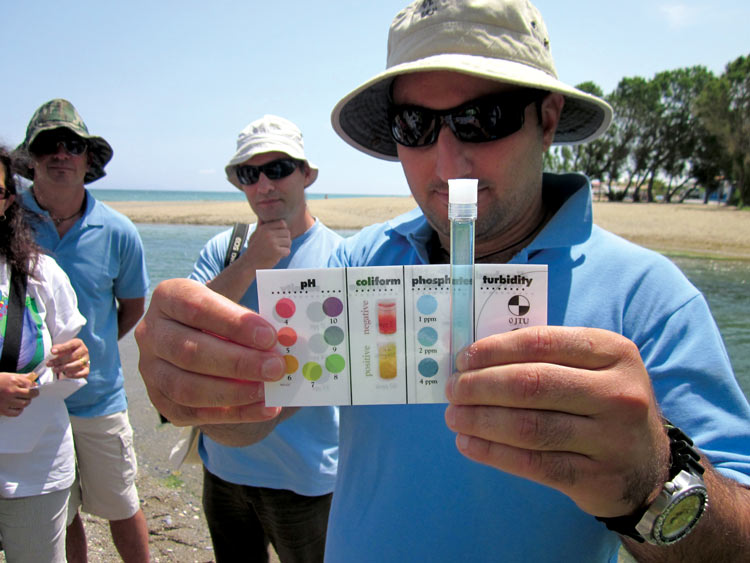
© WWF Greece
A network of volunteers was gradually developed across 6 Aegean islands (Limnos, Lesvos, Paros, Andros, Skyros and Kos) to promptly identify degrading activities and inform the project’s scientific team. Following relevant training, the volunteers would visit the wetlands to monitor their status and report to the scientific team. In Crete, where the project headquarters are, monitoring was most intensive. In the beginning, monitoring activities in Crete were carried out by members of the project team with the help of individual concerned citizens. Since 2011, a new and very active network of volunteers was developed thanks to the support of the Coca-Cola System in Greece (Coca-Cola Hellas and Coca-Cola Tria Epsilon) in the context of the environmental program Mission Water (in Greek). The network contributed to many awareness activities directed to the general public and the local institutions of Crete. The program’s success allowed the network to spread with its new and more organized form to Paros and Lesvos.
Information, Protection, Conservation and Political Intervention
For every degrading activity that the project researchers and monitoring network volunteer identified, an official letter was drafted, in collaboration with the Citizen Support Legal Team of WWF Greece, documenting the case, analyzing the legal framework, and posing specific questions to the relevant services and authorities. Overall, we handled more than 70 cases of degradation in 12 islands. Correspondence exchanged to date adds up to roughly 700 letters. In many cases, considerable fines were imposed, while 5 cases (4 in Crete and 1 in Euboea) involving dozens of accused individuals have been brought to court.
We talk with citizens and pay attention to their concerns. We inform them of the value of their area’s wetlands, in the hope that they will join us in fighting for their conservation.

© A. Bonetti / WWF Greece
Presidential Decree
A particularly gratifying development was the establishment of a new institutional framework that, provided that it is consistently implemented, fortifies these valuable ecosystems. Law 3937/2011 “on the conservation of biodiversity and other provisions” paved the way for drafting a Presidential Decree on wetland protection. The Presidential Decree Approval of a list of small island wetlands, and provision of terms and conditions for the protection and conservation of small coastal wetlands included therein, signed in June 2012, emanated from that law. According to the Decree, 380 natural island wetlands in 59 islands, covering up to 80,000 square meters, are protected under strict provisions.
Inclusion in the Open City Spatial and Residential Development Plans
An important step towards the protection of island wetlands at a local level was the effort to have them included in the Open City Spatial and Residential Development Plans. In 2009, memoranda were sent to the competent authorities of all levels (central and regional, prefectural and municipal) requesting that wetlands be included in Open City Spatial and Residential Development Plans and/or General Urban Plans. By 2012, after the positive response of the pertinent services, 69 wetlands had been included as protected areas in Open City Spatial and Residential Development Plans and General Urban Plans in Crete (48 wetlands), Ammouliani (1), Limnos (11), Paros (8) and Leros (1).
After 9 years, many late nights, dozens of meetings, and thousands of kilometers on the ground in the islands we have achieved many important victories. Establishing the institutional protection of 380 natural wetlands, mobilizing citizens and spreading knowledge are only a few of them. The road ahead is full of challenges; we accept them and continue our efforts. Will you join us?
Project leader:
Thanos Giannakakis, This email address is being protected from spambots. You need JavaScript enabled to view it., 0030 2810 328019
Share this




